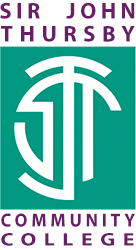Topic 1 Year 7 BIOLOGY
| Biology | |||
| Topic | Organisms 1 | ||
| No of lessons | 11 | ||
| When is it happening | Year7 Term 1 | ||
| What will students learn | Know the 7 signs of life. Students need to develop an understanding of the structure and functions of a skeleton, how joints are structured and why muscles need to work in antagonistic pairs. The structure of plant and animal cells and the functions of the cell organelles. Name some specialised plant and animal cells and be able to relate structure to function. Be able to use a light microscope and be able to make scientific drawings of what they see. Know the difference between unicellular and multicellular and know why multicellular organisms have different levels of organisation. Have a basic understanding of some body systems and how these inter-relate. | ||
| Key Knowledge that students should know at the end of 'Topic' | This is the knowledge that students will meet for the first time in this topic | Describe and explain the 4 main functions of the skeleton. The 7 signs of life. Classify a virus is living or not living. The structure of a synovial joint. Different types of joints and the types of movement they allow. How muscles work in antagonistic pairs. The basic structure of plant and animal cells. The function of the different cell organelles. The process of diffusion. The structure and function of specialised plant and animal cells. The levels of organisation of multi cellular organisms to include cells, tissues, organs, organ systems. Name the key organ systems of the body and describe their main components. Know the function of the key organ systems of the body. How unicellular organisms are adapted to survive. How recreational drugs can affect different body systems. How the failure of one organ system can affect others. | |
| This is knowledge that students may have met before but will need to deepen their understanding | Students should have knowledge of a basic animal skeleton and that the function is to protect, support and allow movement. They should have a basic knowledge of the digestive and circulatory systems and the effects that drugs, exercise and lifestyle have on their bodies | ||
| Key Skills that students should be able to demonstrate at the end of 'Topic' | This is the skills that students will meet for the first time in this topic | Drawing scientific diagrams with labels and annotations. To be able to use a light microscope and be able to sequence the process to obtain a clear image of a specimen. To be able to prepare microscope slides of onion skin cells and cheek cells using an appropriate stain. | |
| This is skills that students may have met before but will need to develop | Students will more than likely have not come across any of the skills required for this topic at KS2. Might have come across scientific diagrams and know that they should be labelled. Basic knowledge of cells gained at KS1. | ||
| Key vocabulary that students should know and understand |
vacuole, chloroplast, cell wall, neurone, ciliated epithelium, haemoglobin, oviduct, uterus, palisade cell, root hair cell, phloem, xylem, lignin, uni-cellular, flagellum, capsule, multi-cellular, tissue |
||
| The Big Question | What makes up living things? | ||
|
Key questions that students should be able to answer at the end of the 'Topic' |
What are the 7 signs of life? | ||
| How does a skeleton carry out its 4 functions? | |||
| What tissues are found in joints? | |||
| How do muscles help create movement? | |||
| How is a chicken wing like a human arm? | |||
| What structures are found in animal cells? | |||
| What are the similarities and differences between plant and animal cells? | |||
| How are some cells specialised to carry out a specific function? | |||
| What is the difference between uni-cellular and multi-cellular organisms? | |||
